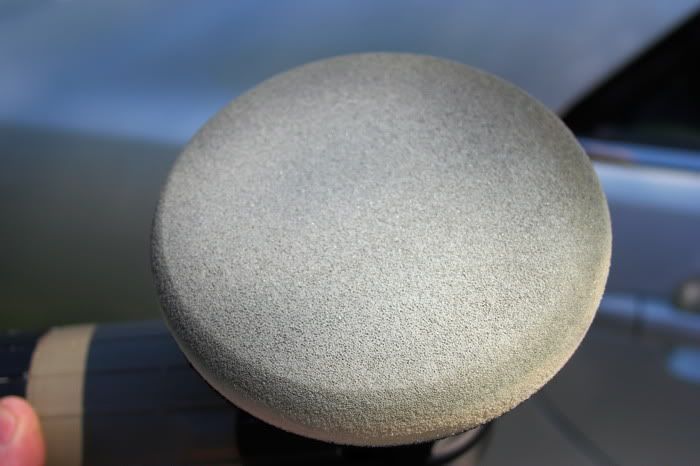Todd@RUPES
Just a regular guy
Priming your polishing pad maximizes its performance by increasing the cutting potential and creating an even surface for a better finish.
[ame=http://www.youtube.com/watch?v=1QT1ugq98ko&feature=plcp]Polishing Pad Priming - YouTube[/ame]
Three Types of Pad Priming:
There are three ways to prime a polishing pad, each offering different advantages.
Using a Pad Conditioner:
Using a pad conditioner, such as BLACKFIRE Advanced Pad Conditioner, when first using a fresh polishing pad will increase your polishing performance right off the bat. The lubricated formula will prevent dry buffing and all the polish to evenly coat the surface during the first pass. Simply mist a light amount of pad conditioner on to the face of the pad then add an ample amount of polish. Use 2-3 times as much as you normally would use.
This is a simple, yet effective way to prime your pad on the fly, and is better than using just the product itself.
Using the Polish Product:
Using the polish itself, with out the aid of a conditioner is another effective way to prime your polishing pad. This adds a maximum amount of polish over the face and into the pores of the pad, increasing the total cutting power. This type of priming is extremely effective when using non-diminishing abrasive polishes such as Meguiar's M105 and Meguiar's M86.
Add an ample amount of polish to the face of the pad and spread into the pad with your thumbs. Add additional product to cover any bare/bald spots. Continue until the entire surface is coated, then allow to dwell for 3-5 minutes. Use a pad brush or compressed air to remove excess product.
Using the Hybrid (Combination) Method:
The Hybrid Method combines both of the above methods and is a great compromise between the two. I use this most for general polishing and final polishing. By adding a little pad conditioner to the surface prior to spreading the product out you cut down on the amount of polish needed to prime the face.
Mist the surface of the pad, then add the polish to the face. Spread with your thumbs. The lubricants in the conditioner will allow far less product to spread far further, reducing product amount. Cover any bare/spots will additional product and allow to dwell for 3-5 minutes. Use a pad conditioner brush or compressed air to remove any excess product.
[ame=http://www.youtube.com/watch?v=1QT1ugq98ko&feature=plcp]Polishing Pad Priming - YouTube[/ame]
Three Types of Pad Priming:
- Using a pad conditioner
- Using the product
- Hybrid (combination) priming
There are three ways to prime a polishing pad, each offering different advantages.
Using a Pad Conditioner:
Using a pad conditioner, such as BLACKFIRE Advanced Pad Conditioner, when first using a fresh polishing pad will increase your polishing performance right off the bat. The lubricated formula will prevent dry buffing and all the polish to evenly coat the surface during the first pass. Simply mist a light amount of pad conditioner on to the face of the pad then add an ample amount of polish. Use 2-3 times as much as you normally would use.
This is a simple, yet effective way to prime your pad on the fly, and is better than using just the product itself.
Using the Polish Product:
Using the polish itself, with out the aid of a conditioner is another effective way to prime your polishing pad. This adds a maximum amount of polish over the face and into the pores of the pad, increasing the total cutting power. This type of priming is extremely effective when using non-diminishing abrasive polishes such as Meguiar's M105 and Meguiar's M86.
Add an ample amount of polish to the face of the pad and spread into the pad with your thumbs. Add additional product to cover any bare/bald spots. Continue until the entire surface is coated, then allow to dwell for 3-5 minutes. Use a pad brush or compressed air to remove excess product.
Using the Hybrid (Combination) Method:
The Hybrid Method combines both of the above methods and is a great compromise between the two. I use this most for general polishing and final polishing. By adding a little pad conditioner to the surface prior to spreading the product out you cut down on the amount of polish needed to prime the face.
Mist the surface of the pad, then add the polish to the face. Spread with your thumbs. The lubricants in the conditioner will allow far less product to spread far further, reducing product amount. Cover any bare/spots will additional product and allow to dwell for 3-5 minutes. Use a pad conditioner brush or compressed air to remove any excess product.

